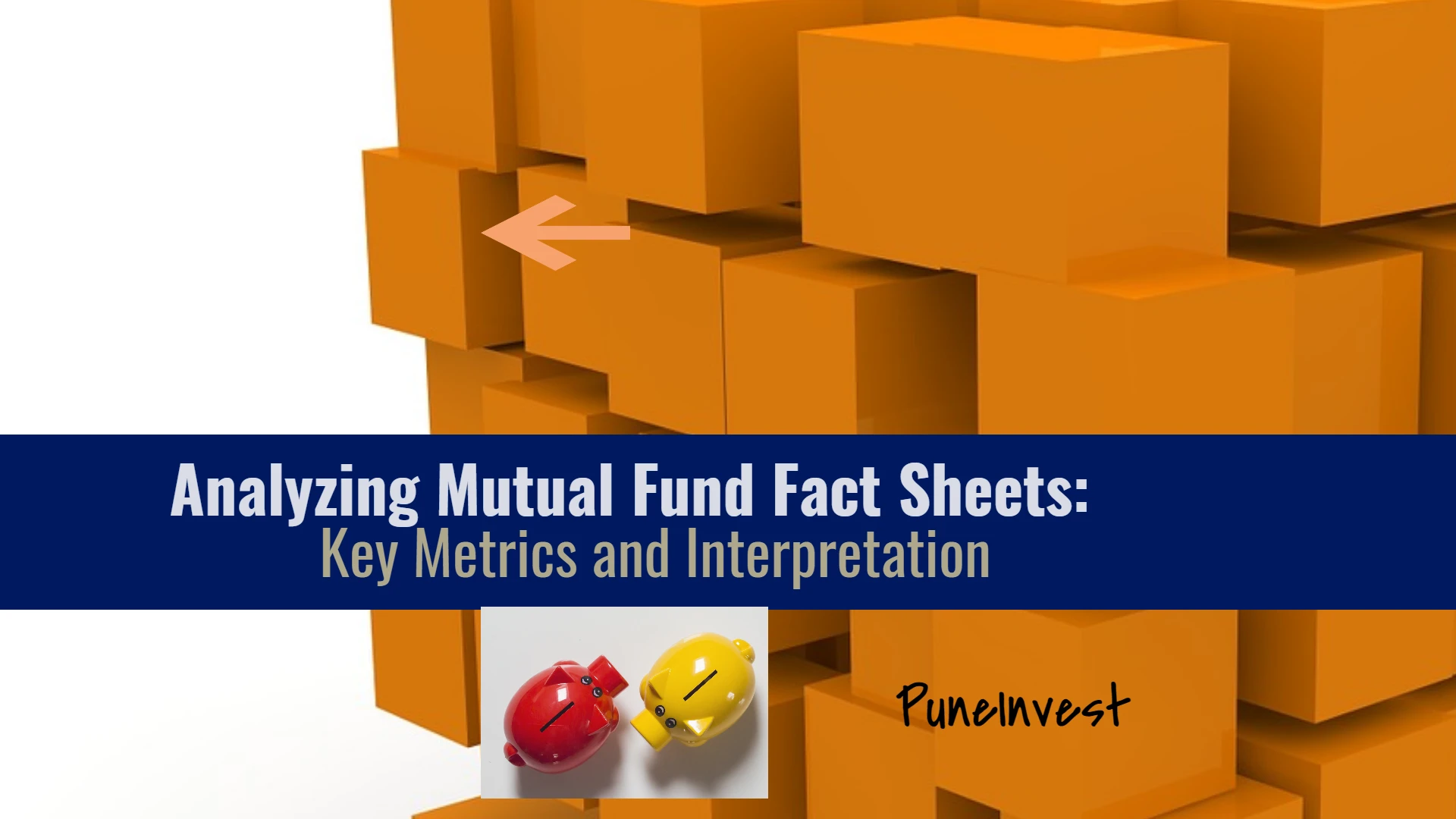To make an informed investment decision, it is crucial to analyze mutual fund fact sheets effectively. In this article, we will delve into the key metrics and interpretation of mutual fund fact sheets, providing you with the knowledge to make informed investment choices.
Understanding Mutual Fund Fact Sheets
Mutual fund fact sheets are comprehensive documents provided by fund companies that contain important information about a mutual fund.
They offer insights into the fund’s investment objectives, portfolio holdings, performance history, fees, and other essential details. Analyzing these fact sheets can give you a deeper understanding of the fund’s strategy, risks, and potential returns.
Analyzing Mutual Fund Fact Sheets: Key Metrics
1. Fund Objective
The fund objective is a crucial component of a mutual fund fact sheet. It outlines the fund’s investment goal, such as capital appreciation, income generation, or a combination of both. Understanding the fund’s objective helps you align your investment objectives with the fund’s strategy.
If you are an experienced investor, this option may not be beneficial for you. Typically, you will find the same description for every equity scheme with no variations.
2. Fund Performance
Analyzing a mutual fund’s performance is essential in evaluating its past track record. Look for metrics such as the fund’s annualized returns over various time periods, benchmark comparisons, and risk-adjusted performance measures like the Sharpe ratio or the alpha coefficient. These metrics provide insights into the fund’s historical performance and its ability to generate returns relative to its benchmark and peers.
The fund performance details presented to you adhere to SEBI norms, which means you will observe a similar pattern across all fund houses and schemes.
It becomes easier to compare schemes from different fund houses.
3. Expense Ratio
The expense ratio represents the annual cost of owning a mutual fund, expressed as a percentage of the fund’s assets. It includes management fees, administrative expenses, and other operational costs. A lower expense ratio is generally favorable, as it means a higher portion of your investment is working towards generating returns.
Always keep in mind that low expenses do not necessarily guarantee high returns. Other factors also play a significant role in investment performance.
4. Portfolio Holdings
Analyzing a mutual fund’s portfolio holdings is crucial to understand the fund’s investment strategy and underlying assets. Look for information on the fund’s asset allocation, sector diversification, and individual holdings.
Understanding the fund’s exposure to different asset classes and industries can help you assess its risk profile and align it with your investment objectives.
When analyzing, it is important to identify any underperforming stocks within the portfolio.
5. Risk Measures
Mutual fund fact sheets often provide risk measures to help investors assess the fund’s volatility and downside potential. Common risk metrics include standard deviation, beta, and maximum drawdown. By analyzing these measures, you can gauge the fund’s sensitivity to market fluctuations and evaluate its risk-adjusted returns.
6. Dividend Distribution
For income-oriented investors, analyzing a mutual fund’s dividend distribution is crucial. The fact sheet should provide information on the fund’s dividend history, frequency, and yield. This data allows you to assess the fund’s ability to generate regular income and evaluate its suitability for your income needs.
Typically, the dividend history can be found on a separate page towards the end of the fact sheet, often on the last page.
7. Turnover Ratio
The turnover ratio indicates how frequently a mutual fund buys and sells securities within its portfolio. Higher turnover ratios imply more frequent trading, which may result in higher transaction costs and tax implications. Analyzing the turnover ratio helps you understand the fund’s trading activity and potential impact on returns.
8. Fund Manager Tenure
The tenure of a mutual fund’s manager can provide insights into their experience and stability within the fund. Look for information on the fund manager’s tenure and their track record managing similar investment strategies. A longer tenure with a consistent track record may indicate a more seasoned and reliable manager.
9. Investment Style
Mutual funds typically follow specific investment styles, such as growth, value, or a blend of both. Analyzing the fund’s investment style helps you determine its approach to selecting securities and align it with your investment preferences. It is important to note that investment styles may change over time, so regular analysis is necessary.
Analyzing Mutual Fund Fact Sheets: Interpretation
Understanding the key metrics mentioned above is crucial, but interpreting the information is equally important. Here are some points to consider when interpreting mutual fund fact sheets:
- Compare Against Benchmarks: Compare the fund’s performance against relevant benchmarks to assess its relative performance.
- Consider Risk-Adjusted Returns: Evaluate the fund’s risk-adjusted returns to gauge its ability to generate returns considering the level of risk taken.
- Assess Consistency: Look for consistency in performance, risk measures, and other key metrics over multiple time periods.
- Consider Fund Objectives: Ensure the fund’s investment objectives align with your own financial goals and risk tolerance.
- Review Fees: Consider the impact of fees on long-term returns and compare them with similar funds in the market.
- Diversify Your Portfolio: Analyze the fund’s portfolio holdings to ensure proper diversification within your overall investment portfolio.
Frequently Asked Questions (FAQs)
How often should I analyze mutual fund fact sheets?
It is recommended to review mutual fund fact sheets at least on a quarterly basis or whenever there are significant changes in the market or your financial goals.
Can I rely solely on past performance when analyzing mutual funds?
While past performance can provide insights, it is important to consider other factors such as risk measures, fees, and fund objectives to make a well-informed investment decision.
What should I do if I don’t understand certain metrics in a mutual fund fact sheet?
If you encounter unfamiliar metrics, consider consulting with a financial advisor who can help explain the details and guide you in analyzing the fact sheet effectively.
Are mutual fund fact sheets available online?
Yes, most mutual fund companies provide fact sheets on their websites. You can also find them on financial research platforms and websites such as Morningstar or Yahoo Finance.
Can I invest directly in a mutual fund without the help of a financial advisor?
Yes, many mutual funds allow direct investment by individual investors. However, it is recommended to seek professional advice or conduct thorough research before making investment decisions.
How can I track the performance of a mutual fund over time?
You can track the performance of a mutual fund through its fact sheets, financial websites, or investment tracking platforms. These resources provide historical performance data and other relevant information.
Conclusion
Analyzing mutual fund fact sheets is an essential step in making informed investment decisions. By understanding the key metrics and interpreting the information effectively, you can assess a mutual fund’s suitability for your investment objectives and risk tolerance.
Remember to consider factors such as performance, fees, risk measures, and portfolio holdings to gain a comprehensive understanding of a mutual fund.
Regularly reviewing and analyzing fact sheets will help you stay informed and make sound investment choices.



